

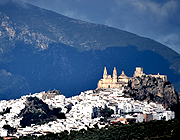
Lovely white towns can be seen all over Andalucia, often perched on the tops of hills.
The dolmens near Antequera are impressive, dating back over 5,000 years.
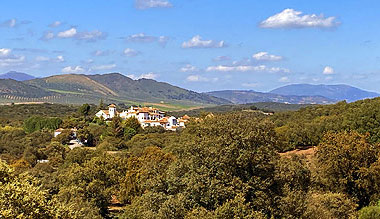
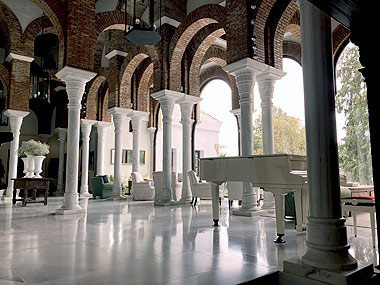
In 2022 we stayed at La Bobadilla, a beautiful hotel set in 350 hectares of olive groves and forests of oak, holm oak and almonds. Whitewashed with terracotta roofs, it is designed to look like one of the small white towns that are ubiquitous in Andalucia.
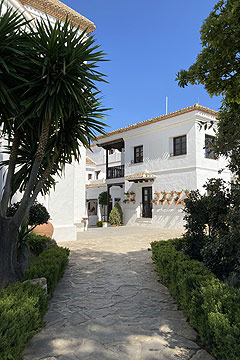
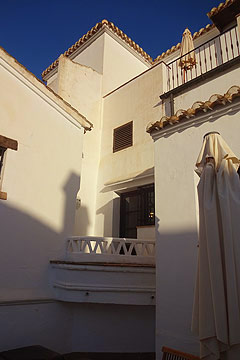
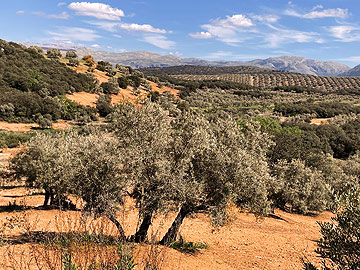
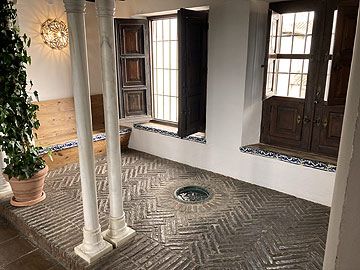
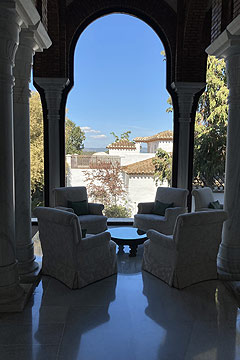
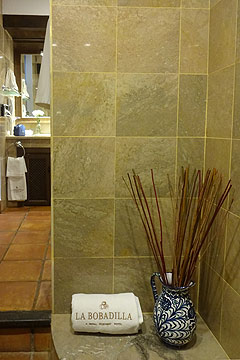
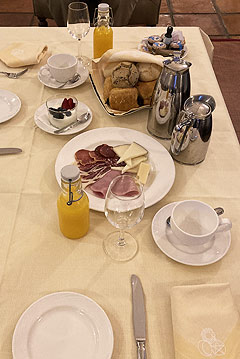
Our suite was very spacious and comfortable with a terrace and small balcony off the bedroom. It was a place we enjoyed coming back to in the evening.
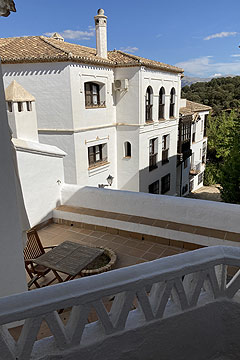
We often had light evening meals served in our rooms after we'd had a large lunch. The efficient, friendly service was very much appreciated when we returned rather tired after our long days touring.
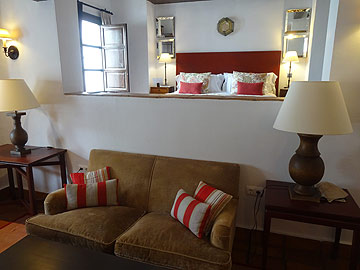
The day we left we had rather an early start and we were served a lovely breakfast in our room - perfect service.
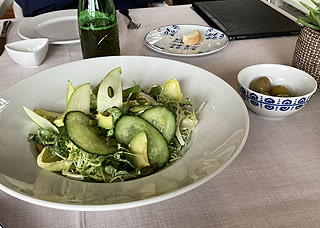
The hotel has two fine restaurants: El Cortijo, where we had excellent sea bass, salad and croquettes, and La Finca where we had the shorter of their two gourmet menus.
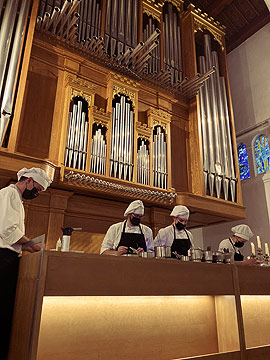
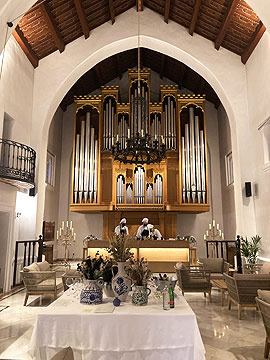
Starting in what was once a chapel, this was quite an experience, the chefs preparing starters to one side while we were served with an excellent Cava.
Then we moved into the restaurant where more courses were brought with wine pairings - the Albarino and Priorat were particularly good. These types of meals are often very rich and can be quite challenging. Each is described in detail but I never remember what each contains apart from the main ingredients.
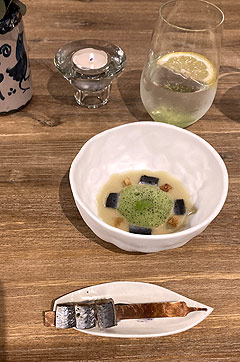
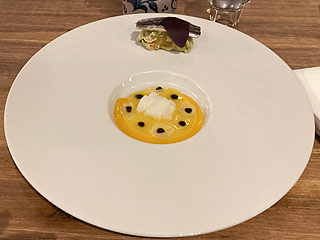
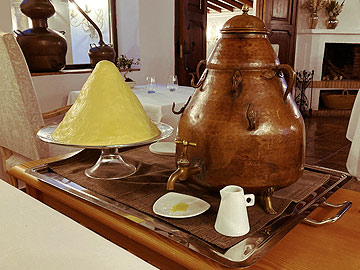
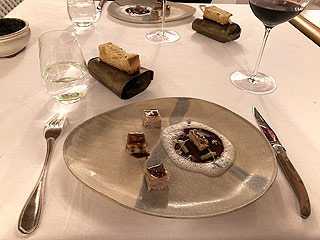
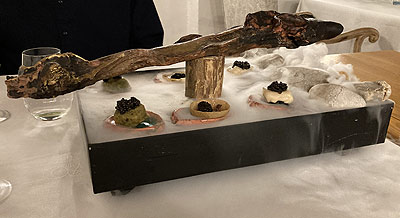
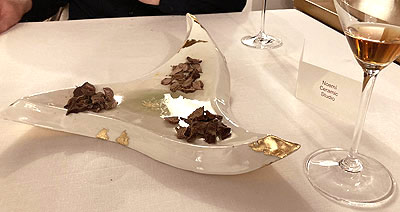
Many courses but only small amounts in each course, it's all about the different flavours and textures, and presentation is just as important.
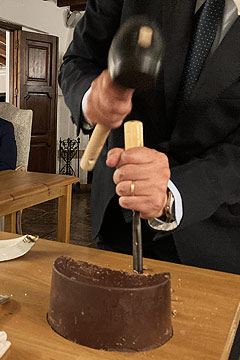
Shortly after we visited, La Finca was awarded its first Michelin star.
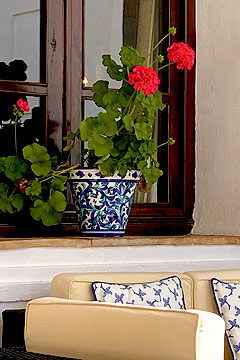
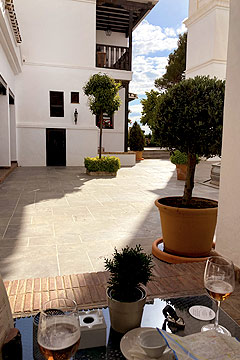
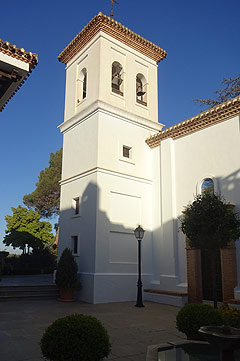
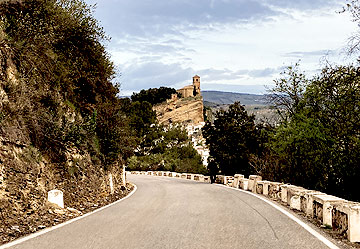
About 60 km from La Bobadilla this typical white Andalucian town is perched high on a hilltop. The road leading to it, once you're off the A-92, is a twisting country road passing through acres and acres of olive groves. Climbing quite high there were stupendous views over the plain to the Sierra Nevada.
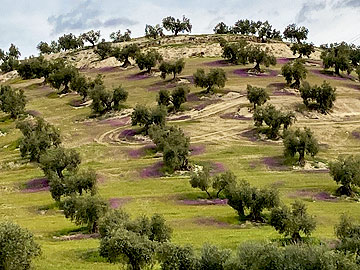
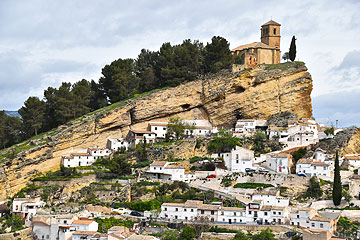
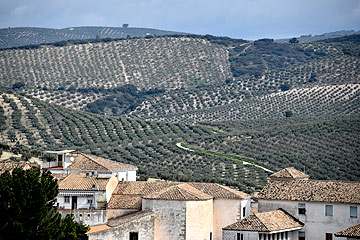
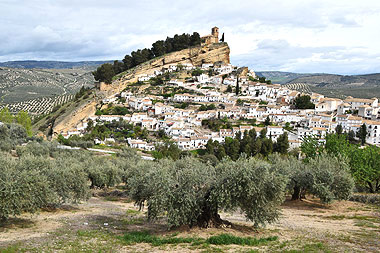
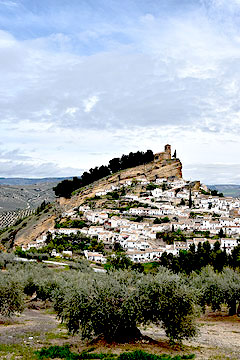
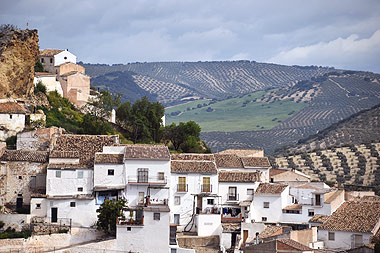
Montefrio is picturesque, perched on a sloping spur of rock, the whitewashed village houses clinging to the sides.
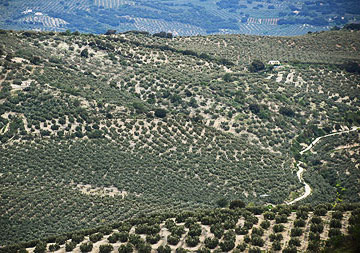
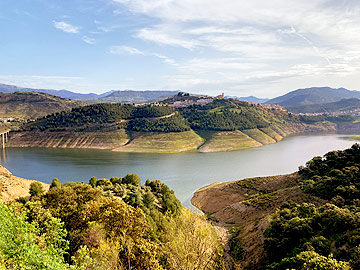
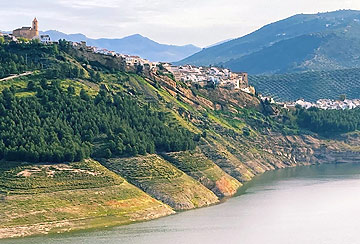
Rather than take the motorway to Cordoba we took the country roads and passed by Iznajar which stands on the side of a large reservoir.
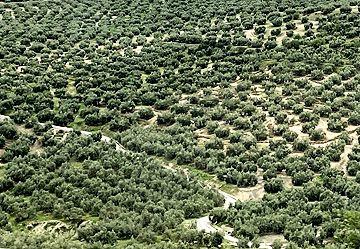
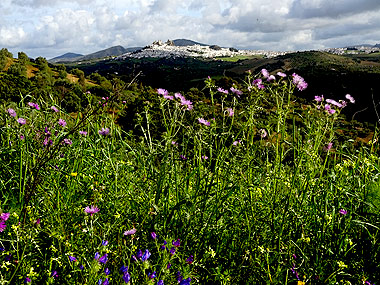
Olvera is visible for miles, set, as these white towns usually are, high above the surrounding countryside, and with its distinctive Moorish castle. We passed it several times on our travels.
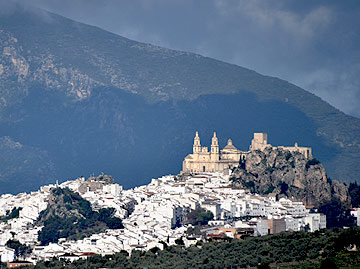
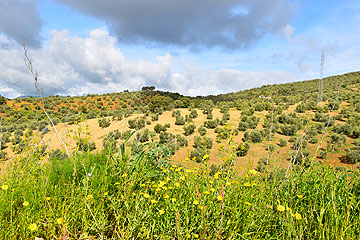
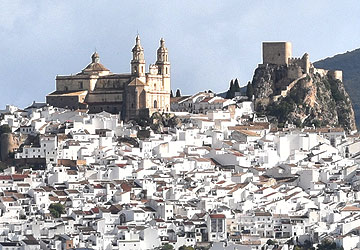
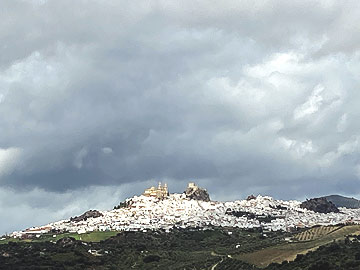
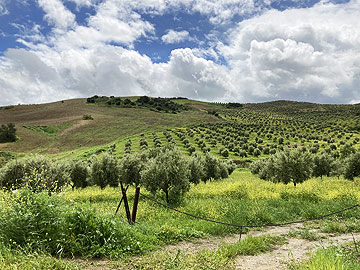

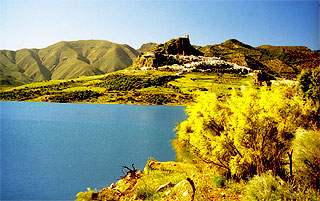
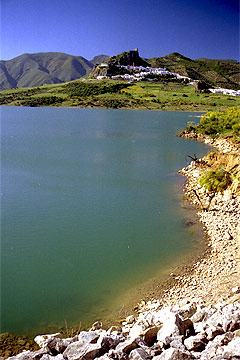
On our first visit in 2001 we stayed in the parador in Antequera which is not the most inspiring in architectural appeal but makes up for it in the restaurant - so good we ate here almost every evening. It was great to be able to rely on it at the end of the day.
Antequera was a central place to stay but involved some quite long days to get to some of our destinations. Along the way we would break the journey with visits to any likely looking sites or villages. One of these was Zahara de la Sierra - a most beautiful white village perched on a hilltop with a castle at its peak. The lake below the village

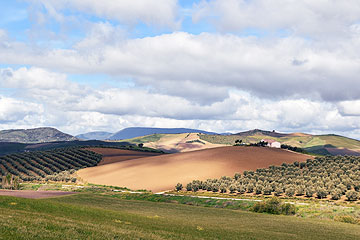
Between Olvera and Ronda Setenil follows a river gorge and is known for its cave houses built into the cliffs.
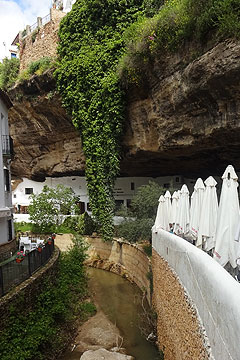
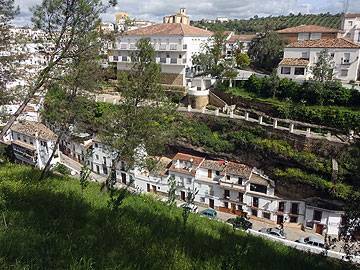
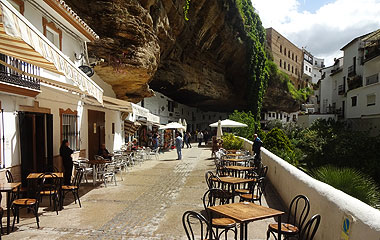
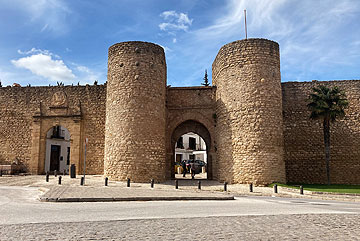
Ronda is the largest of the White Towns and its spectacular setting, astride the deep El Tajo gorge of the Rio Guadalevin, ensures a steady stream of tourists.
The old town is south of the gorge and dates largely from Islamic times.
We had the best meal of our holiday in Ronda, indeed, one of the best meals we've ever had. Kutral is on the outskirts of the town, on the edge of a commercial estate, but otherwise looking out over fields of olive trees to distant mountains.
Inside the restaurant is very modern with the kitchen area visible. It styles itself as a steakhouse and really, this is a meat-lovers paradise. The Argentinian chef specialises in classic Argentinian roasting techniques using the best quality meat.
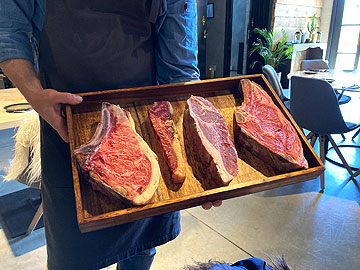
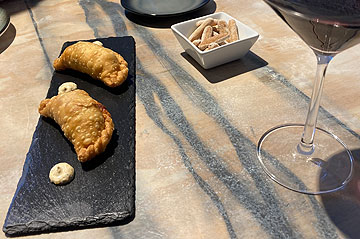
We started with an excellent cava, breads and oils, olives, then two very good meat empanadas.
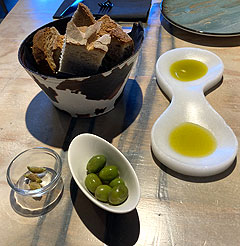
This was followed by a perfect solomillo for me, and superb Iberian black pig for Andrew, served with a small baked potato with sour cream, sea salt and chimichurro sauce, and roasted small green peppers with a couple of glasses of a local red.
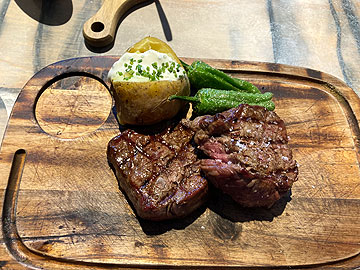
After lunch we walked into town where there were quite a lot of tourists. It's a nice place, bigger than I'd imagined.
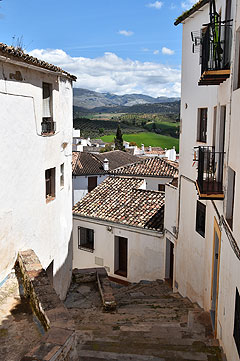
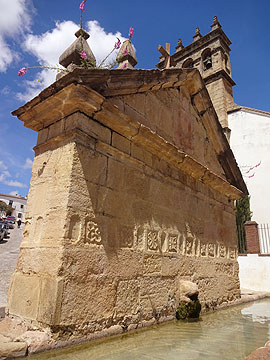
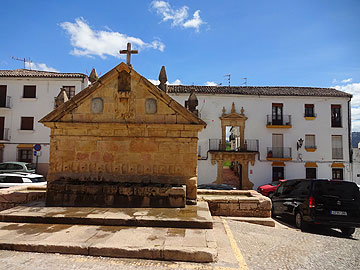
Fuente de los Ocho Caños, the Fountain of the Eight Pipes, is the oldest in the town and really quite magnificent. On one side are eight stone basins with water spouts, probably for washing laundry, on the other a long water trough.1
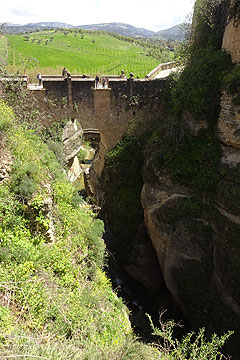
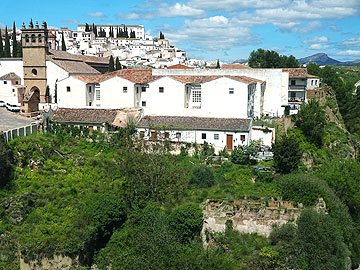
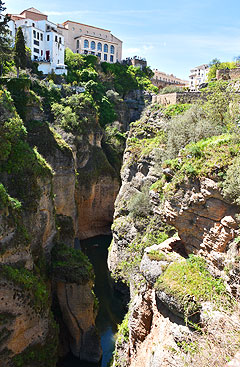
Close to the fountain is the 16th century Puente Viejo, the old bridge, though not as old as the Moorish Puente Arabe just below it, near the Arab Baths.
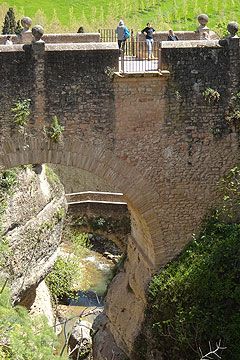
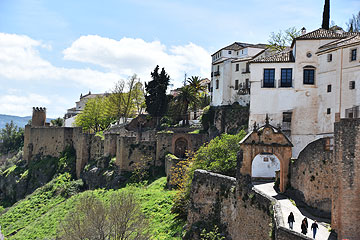
There is a good view of the town walls from Puente Viejo. Originally Moorish they were renovated in the 16th century.
Near the south end of Puente Viejo a steepish descent brings you out at the Puente Arabe and the Banos Arabes, unfortunately closed at the time we were there.
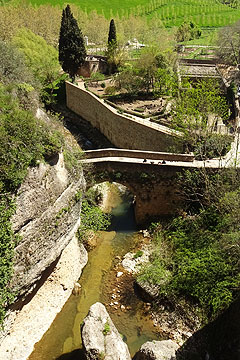
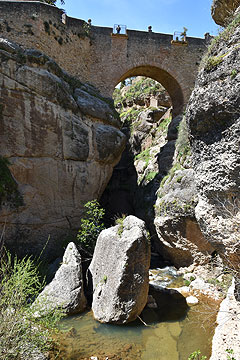
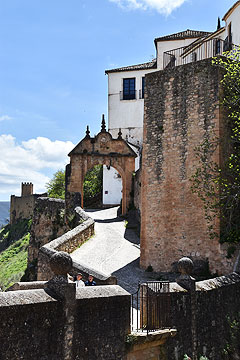
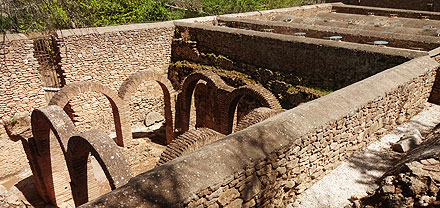
The Arab Baths were based on the Roman bath system, with cold, warm and hot rooms, though where the Romans used water and communal bathing, the Muslims were more likely to rely on heated air and individual ablutions. As with Roman baths these were often as important for socialising as cleanliness. The boiler room was next to the hot/steam room. The boiler heated the air of a hypocaust system beneath the floors of the hot and warm rooms. Steam was achieved in the hot room simply by throwing water on the floor.
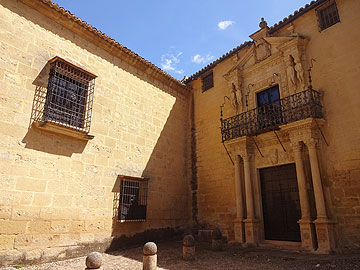
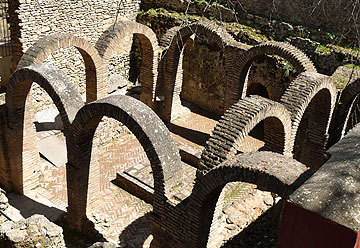
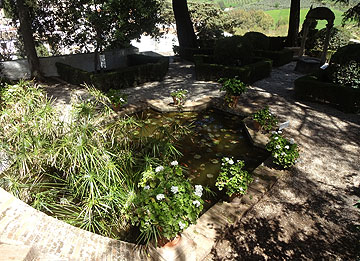
Through the Arco de Felipe V and a sharp bend in the road up to the Casa del Rey Moro - House of the Moorish King. Gardens high above the gorge lead to La Mina, a steep flight of over 200 steps cut into the rock down to the river ensuring water supply even when the town was under attack. It was also here that Christian forces were able to enter the town in 1485.
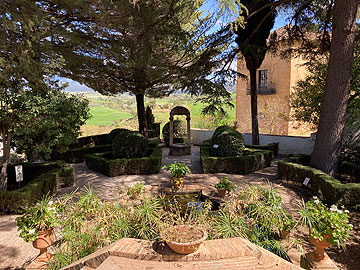
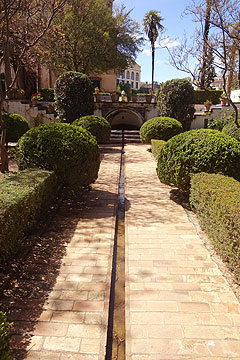
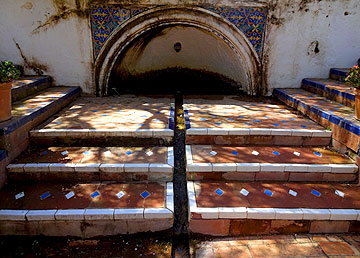
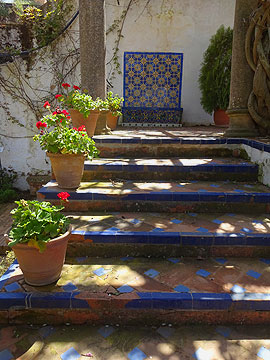
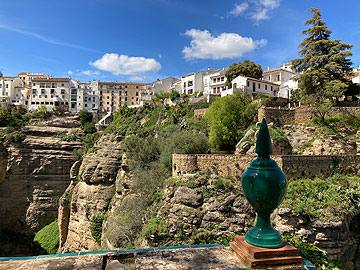
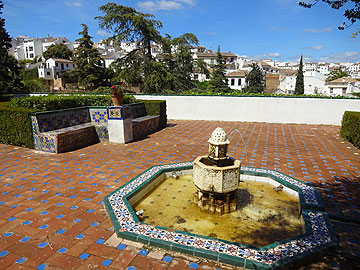
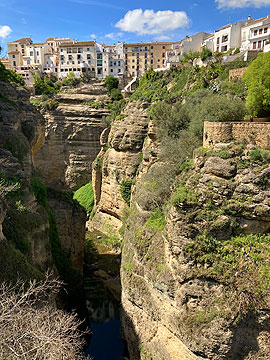
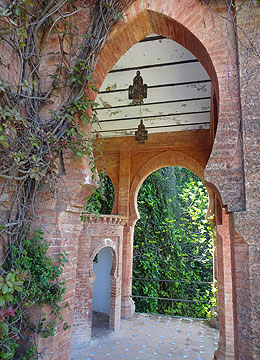
There are fine views of the Guadalevin gorge from the gardens.
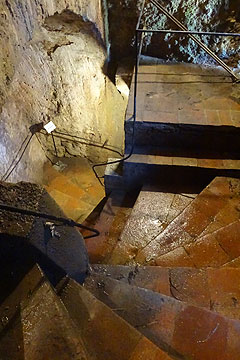
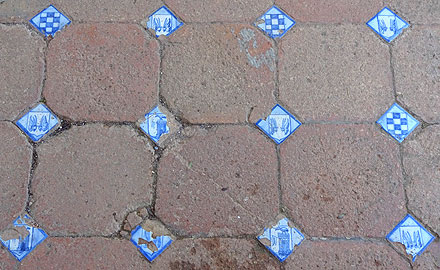
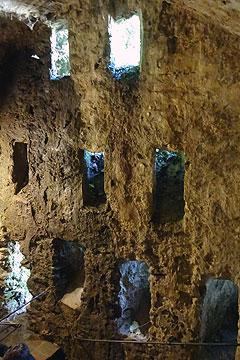
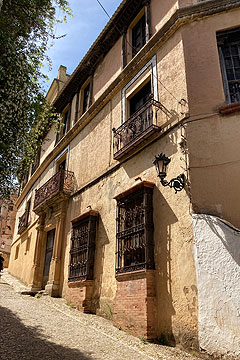
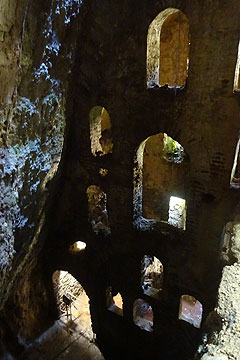
We wandered through the town to the Puente Nuevo on the south side straddling the Guadalevin gorge. It's only called "new" because it's newer than Puente Viejo, having been built at the end of the 18th century. Rather impressive, though.
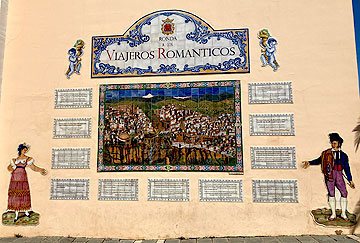
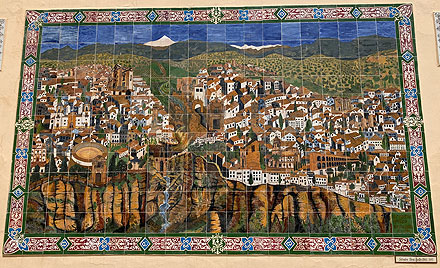
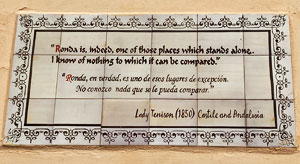
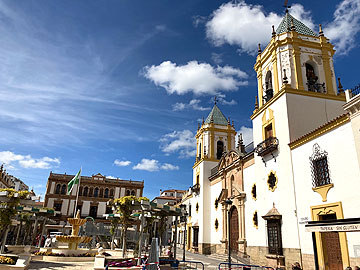
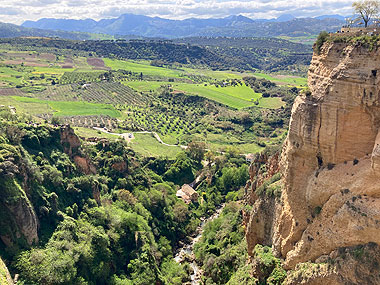
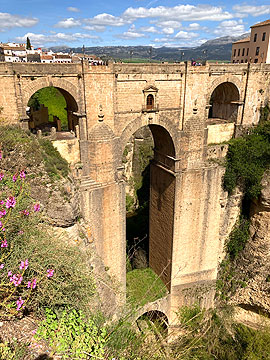
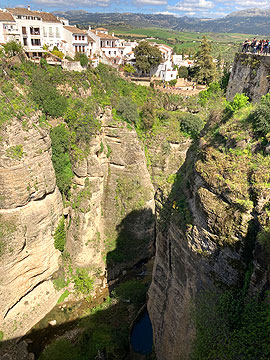
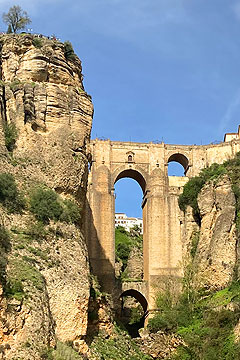
The best view of Puente Neuvo is west of Ronda down on the plain. We drove their but had great difficulty finding the right exit of the roundabout at Puerto Almocabar.
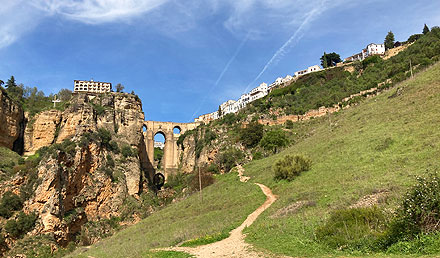
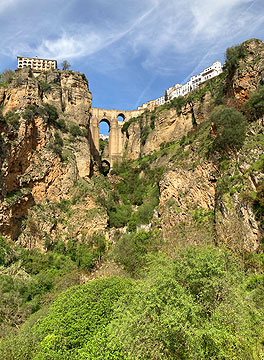
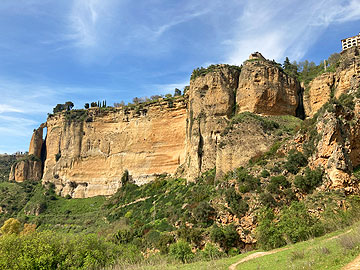
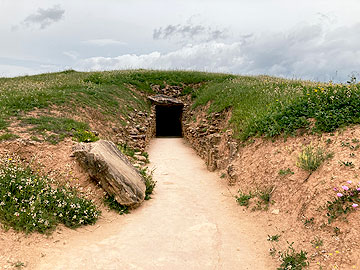
This whole archaeological site, very close to Antequera, comprises three Megalithic monuments, and two natural monuments: La Peña de los Enamorados and El Torcal mountainous formations, and is a World Heritage site.2
The three Megalithic monuments , the Tholos of El Romeral and the Viera and Menga dolmens, were built during the Neolithic and Bronze Ages with large stone blocks. Each is a chamber with either a false cupola (El Romeral) or a lintelled roof (Menga and Viera) and all are buried beneath earth tumuli. The UNESCO website describes these three tombs as "one of the most remarkable architectural works of European prehistory and one of the most important examples of European Megalithism."
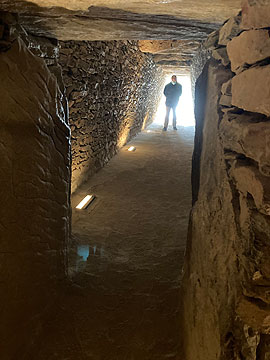
In many ancient sacred buildings and tombs, orientation is often related to the rising or setting sun at a particular time of the year. Unusually Menga is oriented to the sacred mountain La Peña de los Enamorados and El Romeral to the El Torcal mountain range.
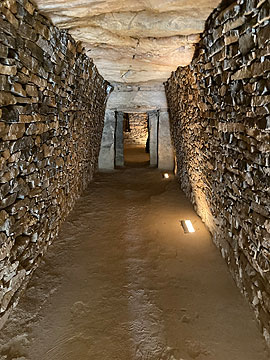
Unfortunately the information leaflet is only in Spanish, but the Antequera website gives a lot of detail.
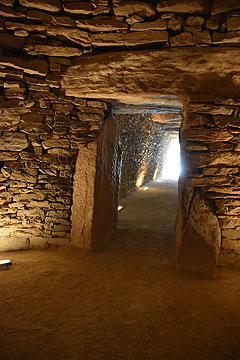
The Tholos of El Romeral is maybe a couple of kilometres from Menga and Viera, though it was discovered by the same Viera brothers who discovered the Viera tomb which was named after them. El Romeral is the youngest of the three sites, built around 1800BC.
A long, somewhat ruined, exterior entrance, leads to a long corridor and thence to a large beehive tomb. The corridor is constructed of drystone walls of small stones covered by huge slabs.
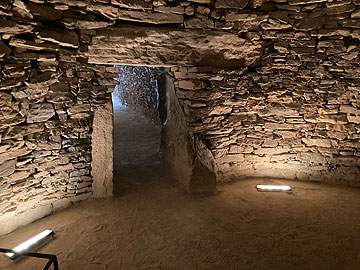
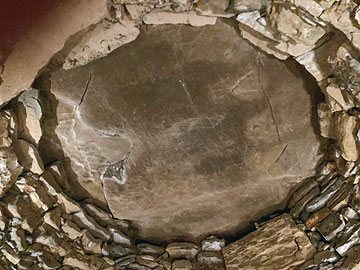
A smaller beehive tomb is joined to the larger by a short corridor which is raised above the current ground level of the main chamber but appears to be on the same level as a rock floor in part of the smaller chamber.
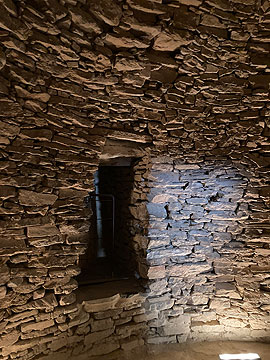
The curved walls of both chambers are capped with megalithic slabs.
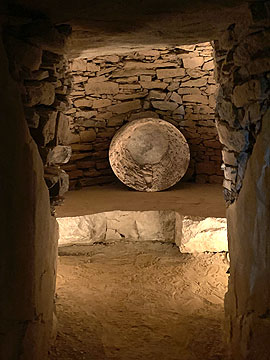
Of the three tombs, this is the only one where bones and grave goods were found.
The Dolmen de Viera also has a long entrance, though this one has been reconstructed. It leads to a long corridor and burial chamber beneath the tumulus. It was built sometime between 3510 and 3020BC.
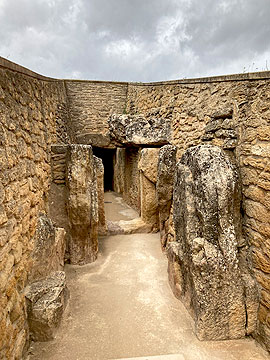
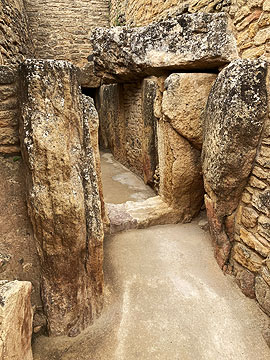
The entrance is a mix of large stones and drystone wall while the corridor walls are constructed with large stone slabs.
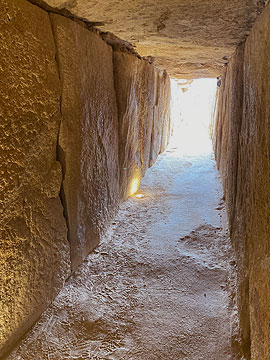
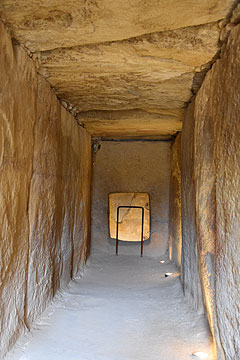
The burial chamber is rectangular in shape, its walls single, massive stone slabs. Even though the burial chamber is closed off with a railing, some idiots had felt it necessary to get inside.
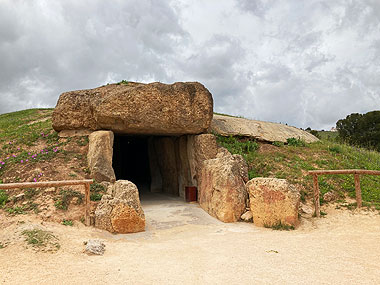
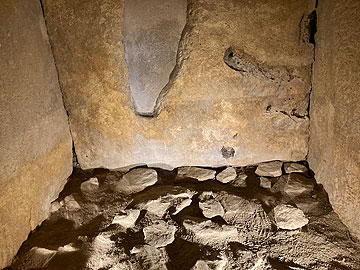
Dolmen Menga is the most impressive of the three and the oldest, having been built between 3800 and 3600BC.3
The entrance is short compared to the other two dolmens, as is the following corridor. But the chamber is vast, a pillared space with megaliths forming the walls and roof. The combined estimated weight of these megaliths is well over 800 tons and largest, the capstone at the back of the chamber, estimated to weigh 170 tons.3
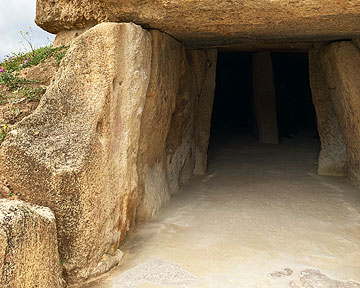
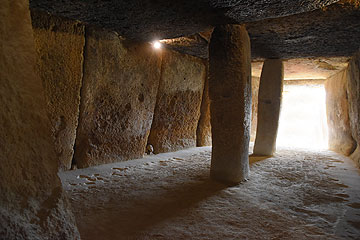
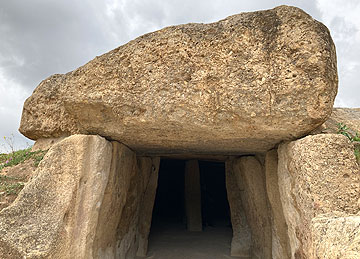
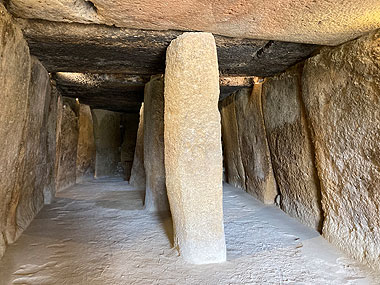
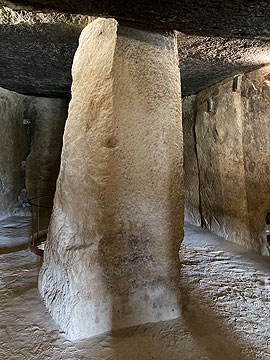
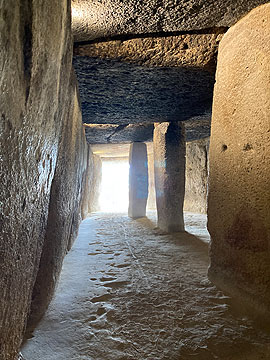
At the end of the main chamber there is a well, 19.4m deep,3 a very unusual feature for a tomb. Perhaps the well was sacred, perhaps it was practical to build the tomb over it to protect it - water was probably a precious resource. Perhaps Menga wasn't a tomb at all.
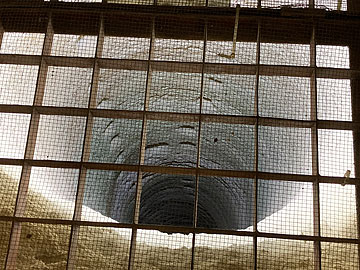
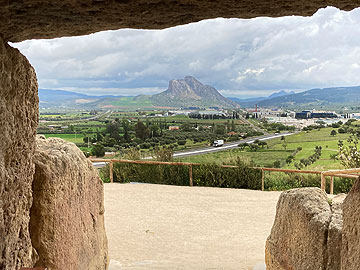
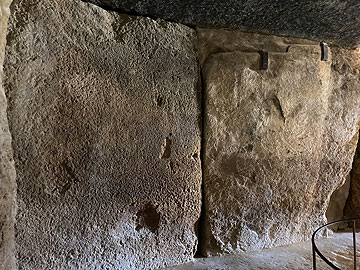
Finally there is the orientation of the Menga, its entrance squarely facing the mountain La Peña de los Enamorados, a very distinctive shape resembling a human face in profile lying down. At the time of the construction of Menga this mountain was already known to the people here, as evidenced by schematic rock art paintings.3
This is a truly fascinating, and unique, site.